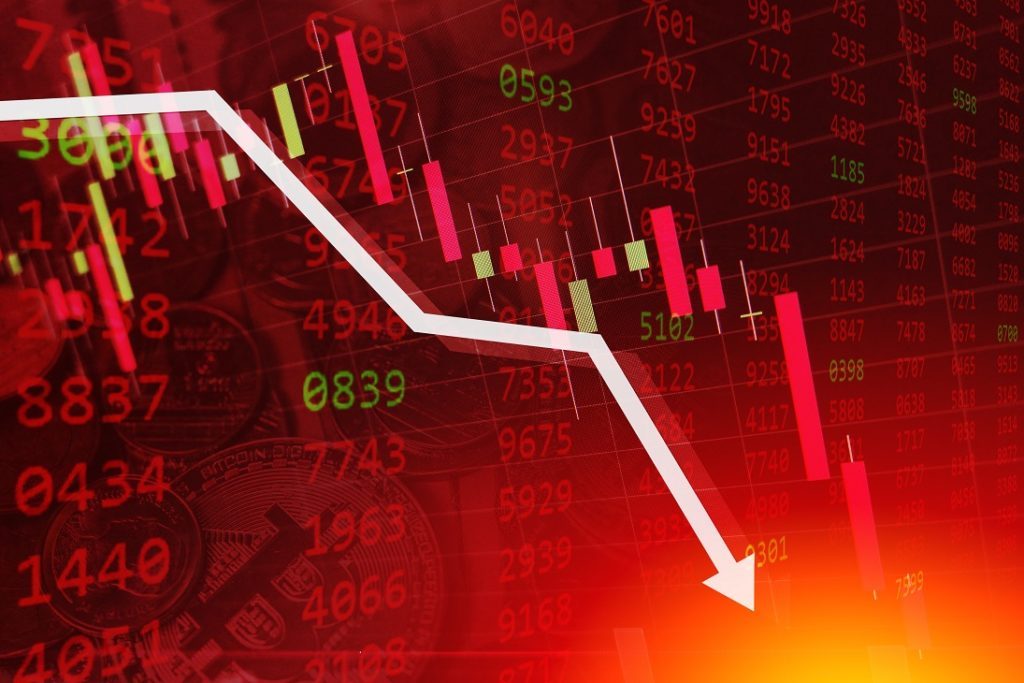Global stock markets will suffer a major crash within the next year. There. I\’ve said it without hedging or qualification. I could have said something more cautious like, \’The chances of a stock market crash have increased considerably.\’ Or, \’The manic investment in stocks that have never made a profit is going to end.\’ Or even, \’After a bull run of four years, the stock markets are overdue for a major correction.\’ Instead, let me stick my neck out.
Stock markets in India and abroad have fallen quite a bit this month. But similar falls have occurred in the last four years, including a catastrophic fall when Covid struck in March 2020. Despite the ravaging of economies, stock markets recovered and boomed. So, the latest market dip in January will be shrugged off by many as just one more dip.
Look Ma No Hands
But I see college boys making minor fortunes investing in the markets and cryptocurrencies. I remember college boys plunging into dotcom companies in 1999 and making quick fortunes. In those heady days, becoming profitable was a sign that a dotcom company had matured, and so had dimmer growth prospects. But a company growing at breakneck speed was expected to lose money for years as it built up market share to become a global giant. So, losing money was no disaster but a high qualification.
That madness has now come back. College students are once again making money in markets, above all in cryptocurrencies. Youngsters who cannot pass college exams think they are geniuses because they plunged early into bitcoin, ethereum, cardano and hundreds of other cryptos that look like pure con games to me. They claim to be the currencies or the gold of the future, acting as hedges against inflation and stock market gyrations.
I see a big future for blockchain technology on which cryptos are based. Central banks will probably come out with digital currencies based on blockchain. But private cryptos are havens for gambling, black money, money laundering and rampant speculation, and will ultimately be crushed. Bitcoin rose from nothing to $60,000 (₹44,77,917), and even after recent crash, it trades for $32,000 (₹23,88,222). I predict it will fall to $0.
An even greater madness has been the rise of non-fungible tokens (NFTs). A digital artist called Beeple sold digital rights to a painting of his at a Sotheby\’s auction for a whopping $69 million (₹514.96 crore). No original painting of his would fetch remotely as much. But this fancy digital gambling device was able to attract manic bidding in millions. Thousands of others have thrown their hats into the NFT ring, and suckers aplenty are buying.
Let me hereby announce I am willing to sell an NFT of this newspaper column really cheap, for just ₹1 crore. Those interested may please send me an email. I promise to donate the proceeds to a worthy cause.
Stock markets once examined every stock for value. Today, value investing is sneered at, and the big boys are rushing into companies that have never made a profit, just as during the dotcom boom, and for the same reason. Losses are seen as a sign of future growth potential rather than disaster. Everybody knows most startups will sink, but nevertheless continue searching for golden needles in a haystack.
Unsettling When It Settles
Markets have soared beyond all reason because central banks everywhere have pumped trillions into economies since the 2008 crash, and more during the Covid crisis. Fiscal deficits have gone through the roof everywhere, as politicians have discovered they can keep printing money without causing consumer inflation. But the flood of money has, indeed, caused inflation elsewhere, not in consumer markets but asset markets, creating stock and property bubbles and encouraging con games.
The chickens are now coming home to roost. Inflation is rising fast everywhere. It is definitely not a just a temporary consequence of supply disruptions by Covid. The US Fed has admitted it needs to get tougher and will raise interest rates 3-4 times this year. It will reverse quantitative easing – it will stop buying billions of securities. Instead, it will sell its existing hoard, sucking money out of markets. Other central banks, including the Reserve Bank of India, will follow suit.
Hence, the biggest driver of market madness is going into reverse gear. The consequences are already clear. The price of an Amazon share has fallen from a peak of $3,700 (₹2,76,138) to $2,900 (₹2,16,433). Many star initial public offering (IPO) stocks have halved in price after launch, Paytm being the best-known Indian example.
The rise of unicorns, which have attracted billions in investment without making a profit, has spurred innovation and democratised capital availability. But shrewd investors know most will fail. The stock markets are beginning to acknowledge this too.
Ageing populations mean that the world has a savings glut. Future demand is more for services than goods, and these require less capital. So, by historical standards, interest rates will be lower and market multiples higher. Nevertheless, an eventual crash is inevitable in a market so full of madness. The end is nigh.
This article was originally published in The Economic Times on Jan 26, 2022.


